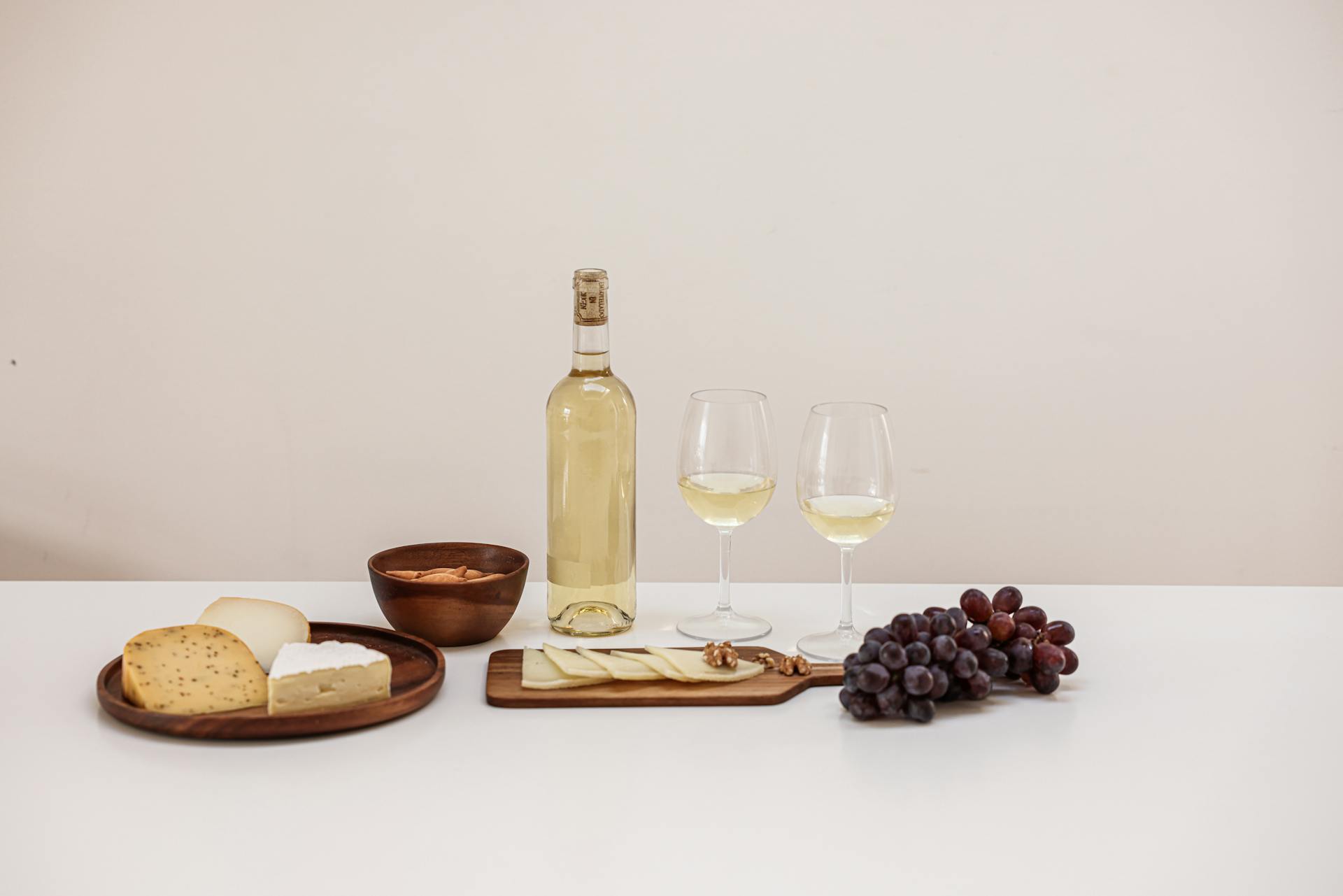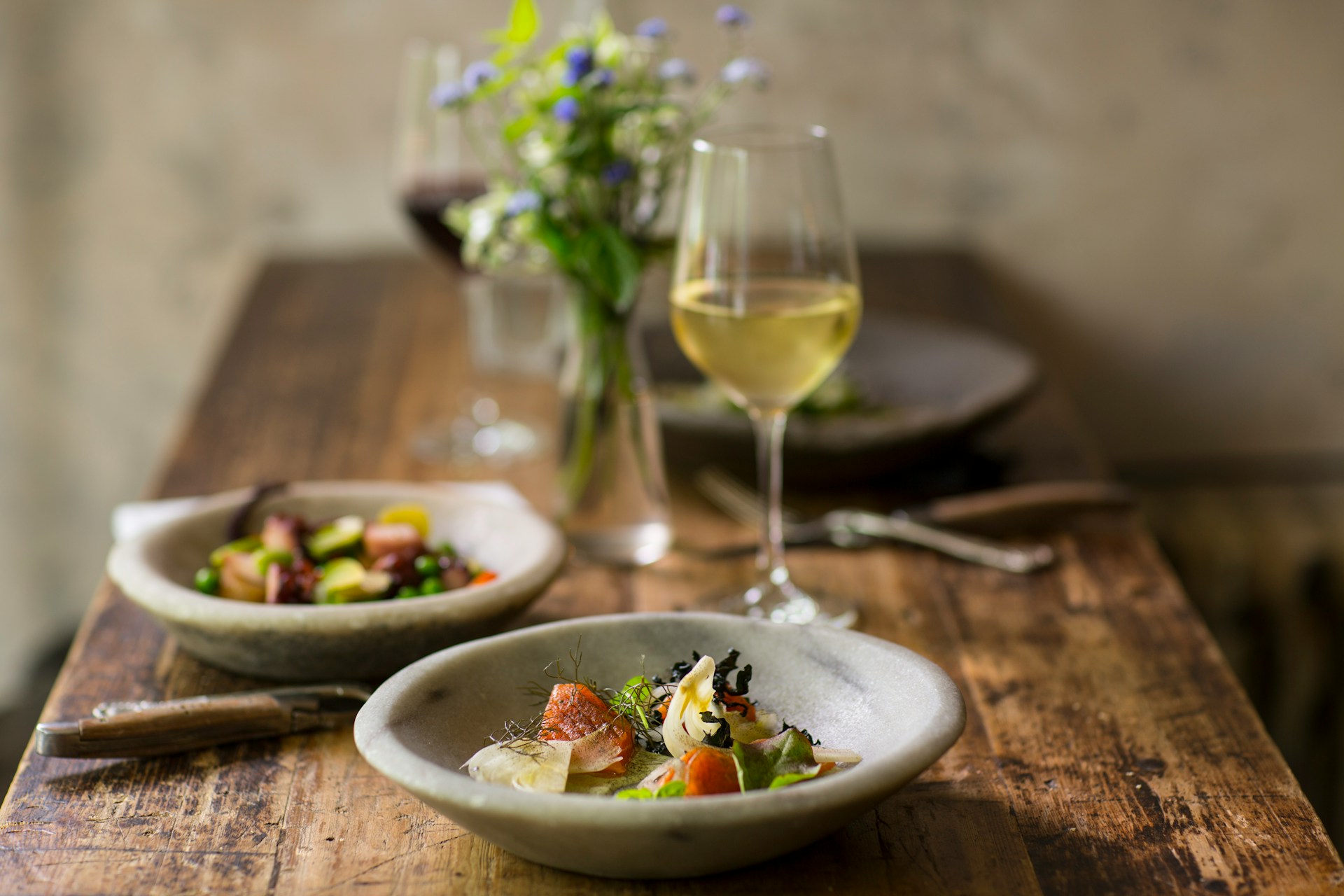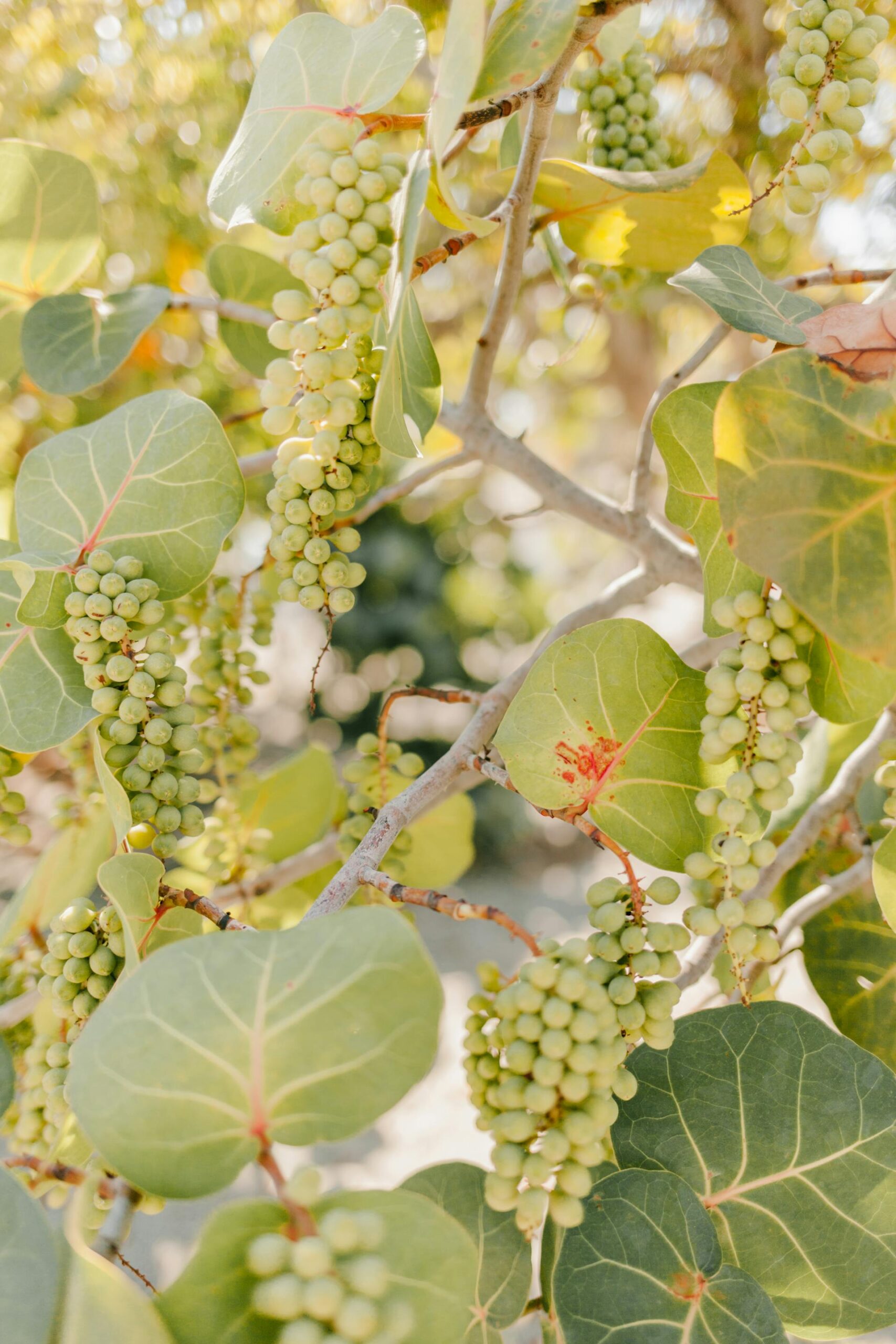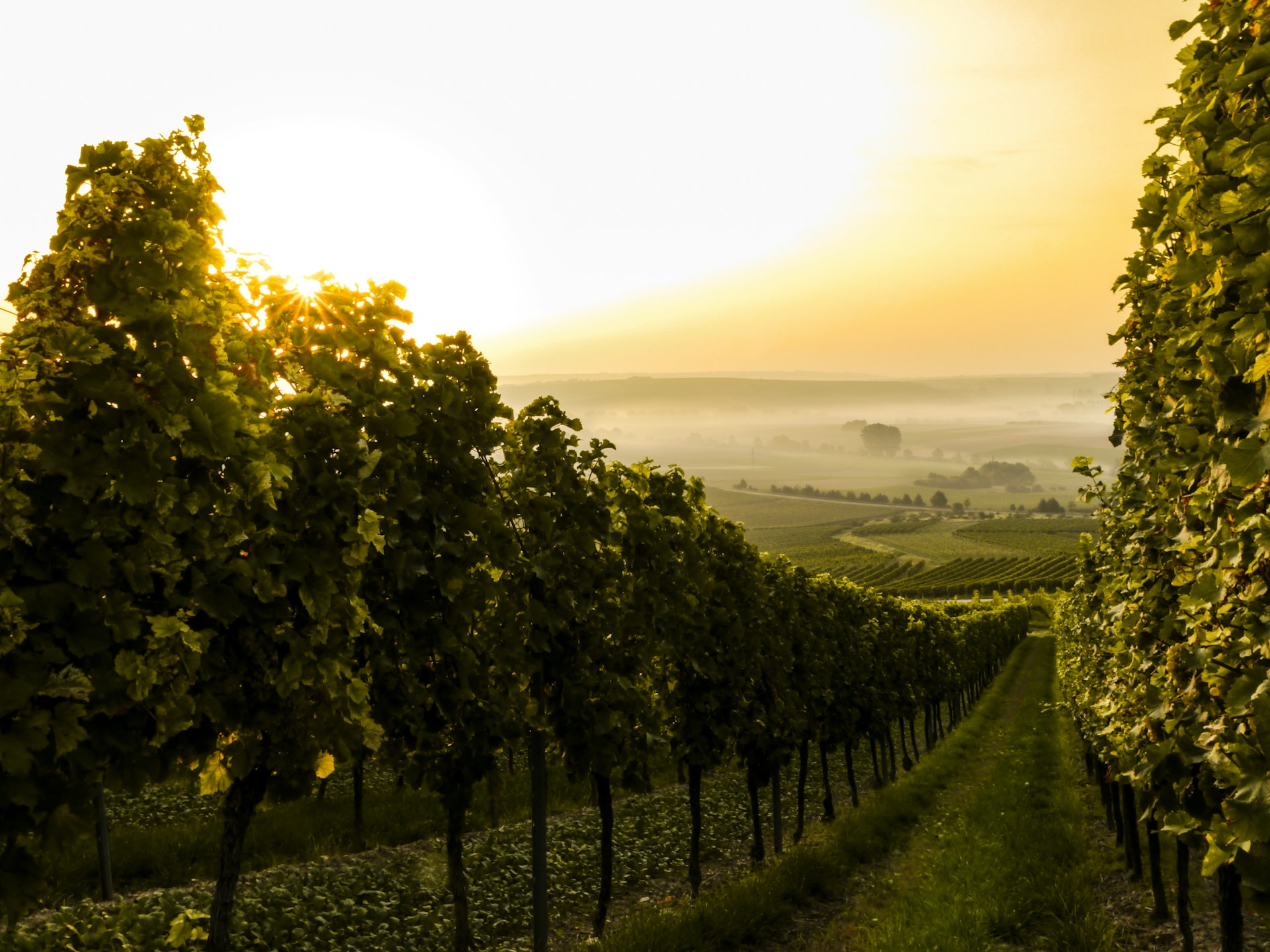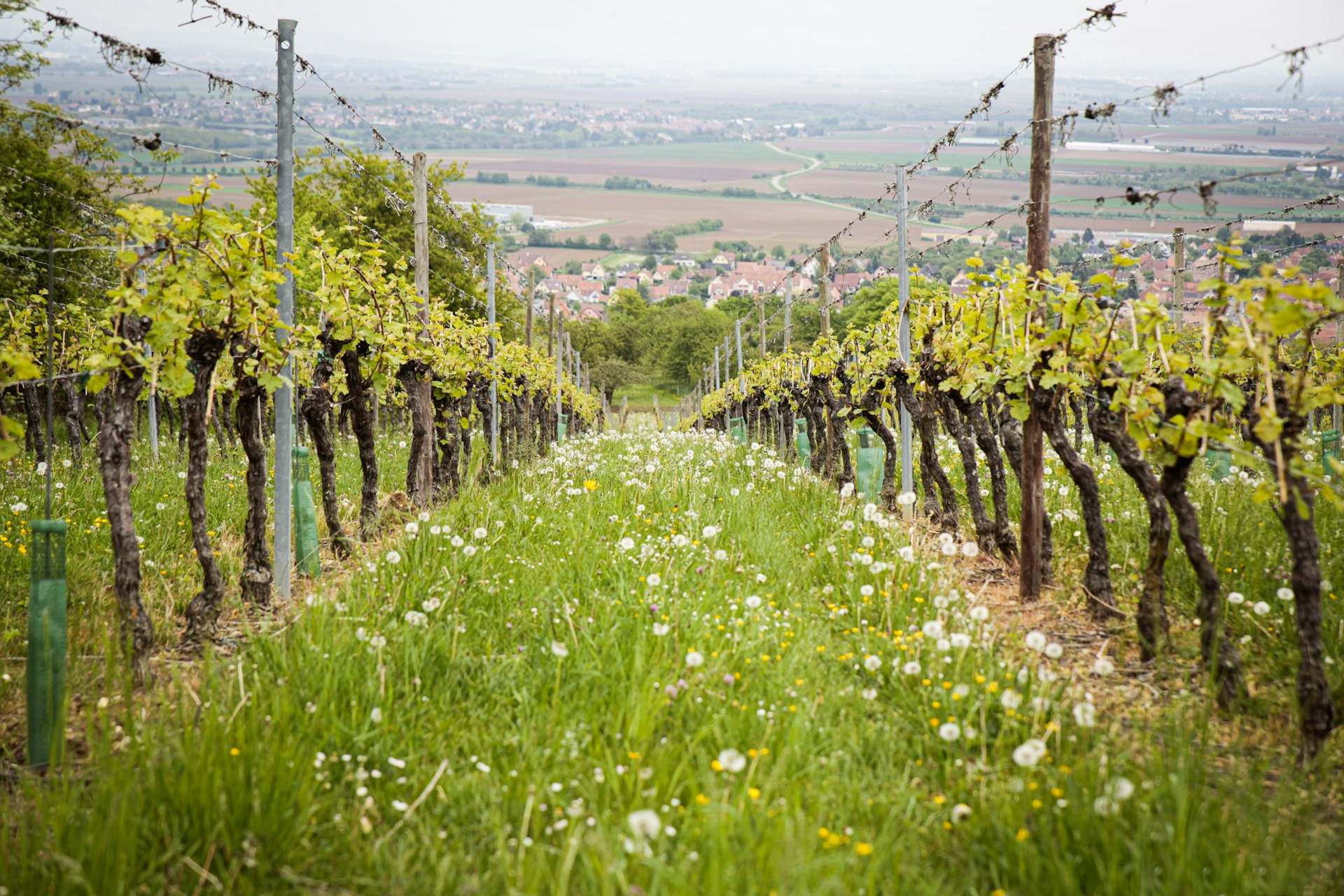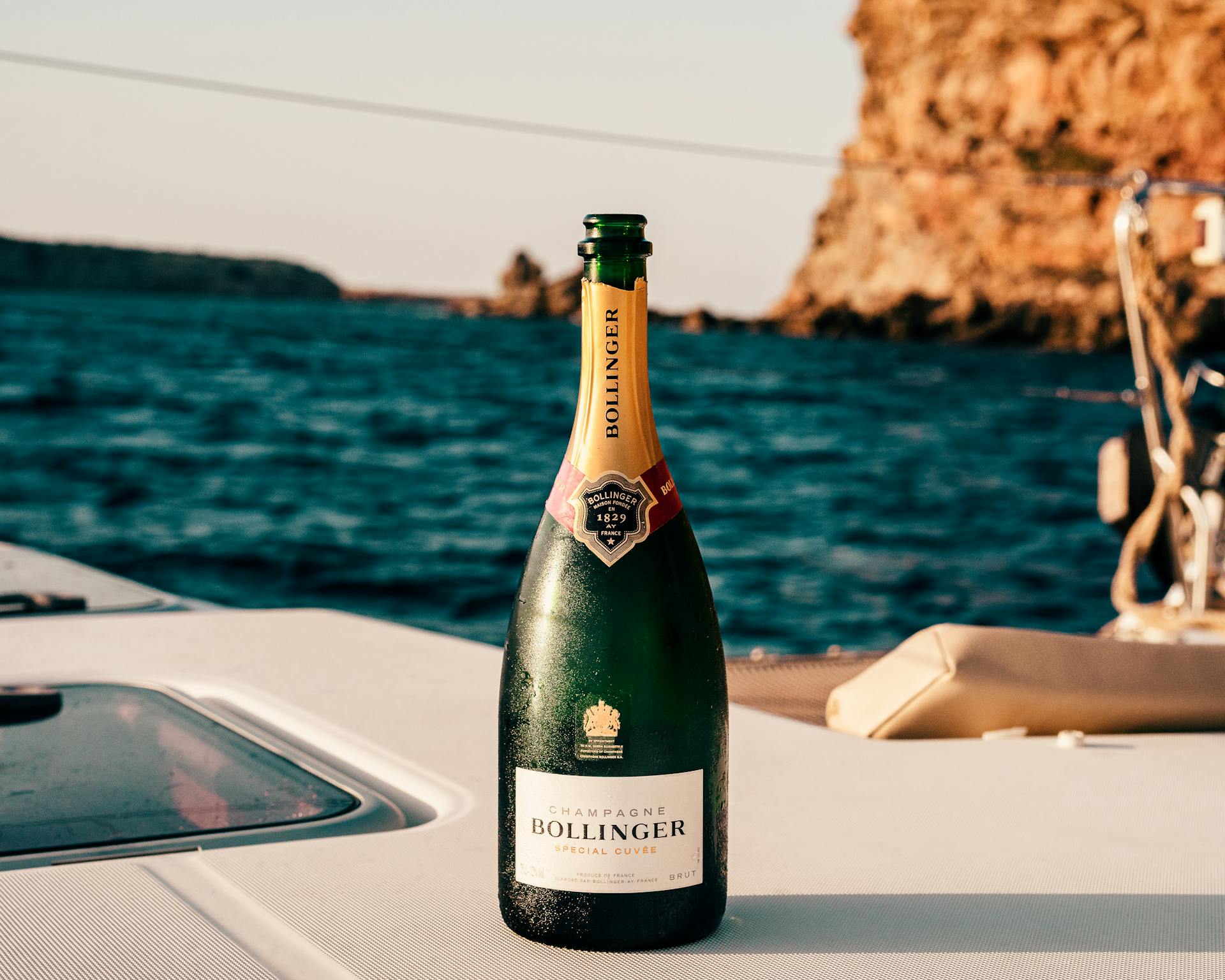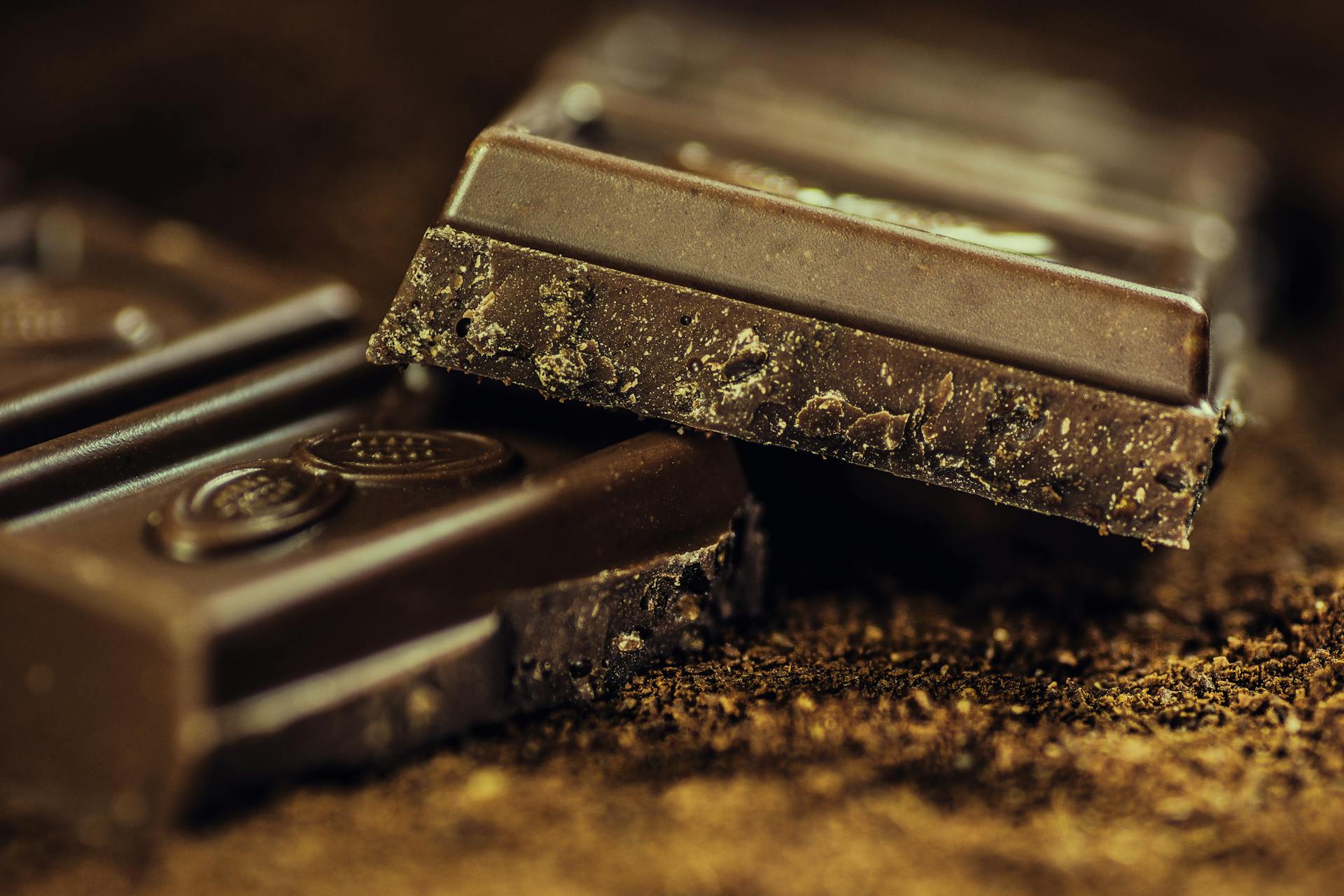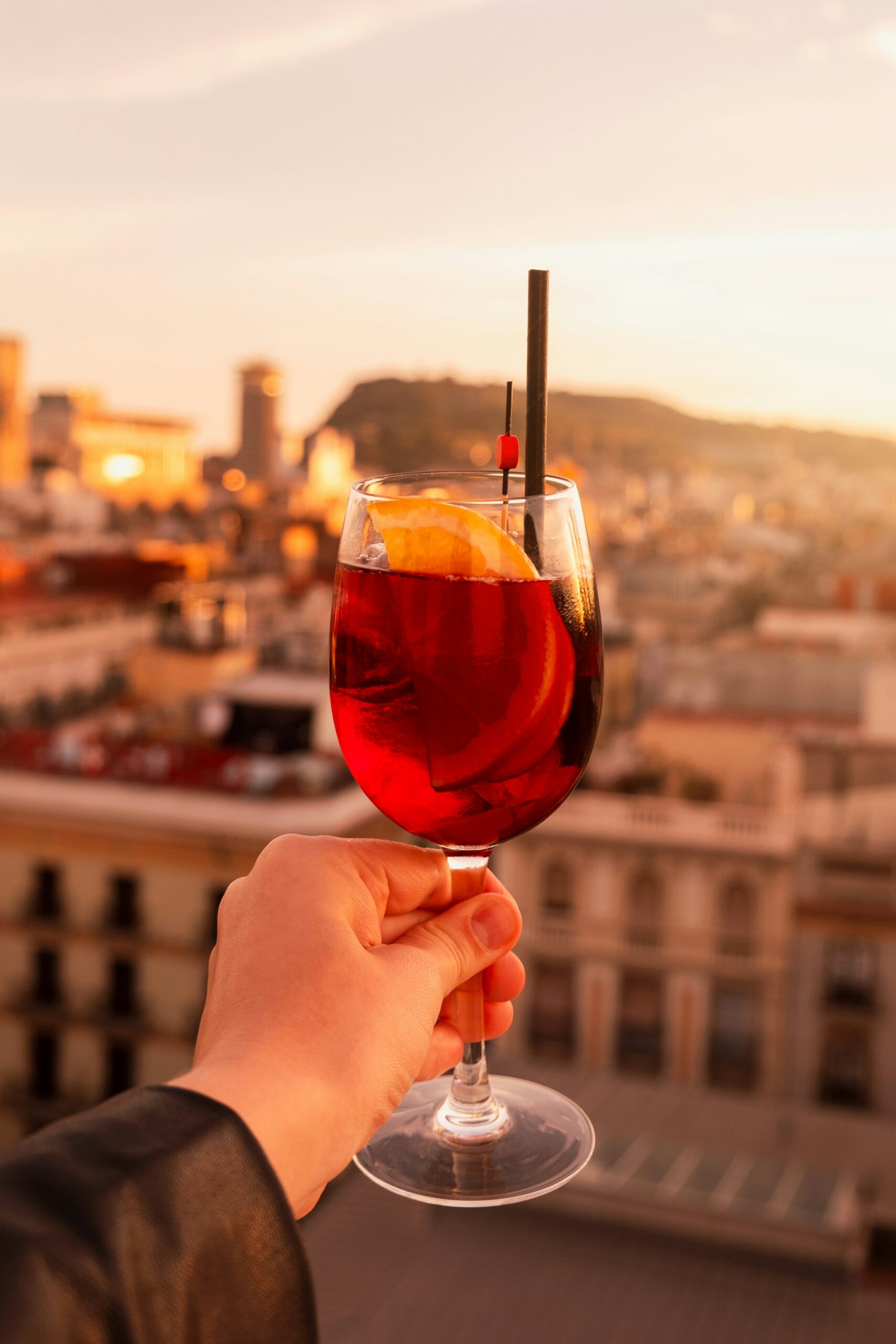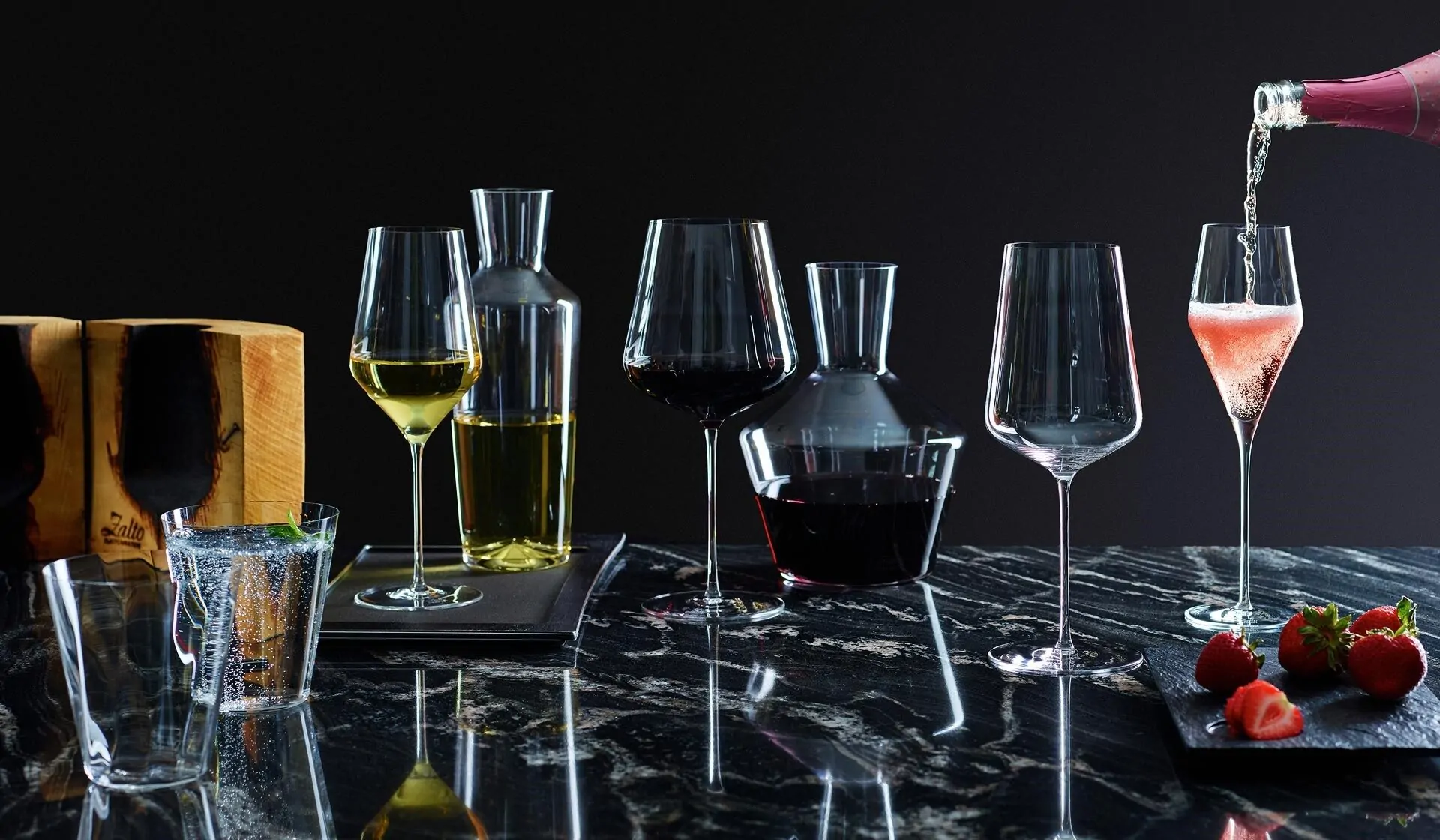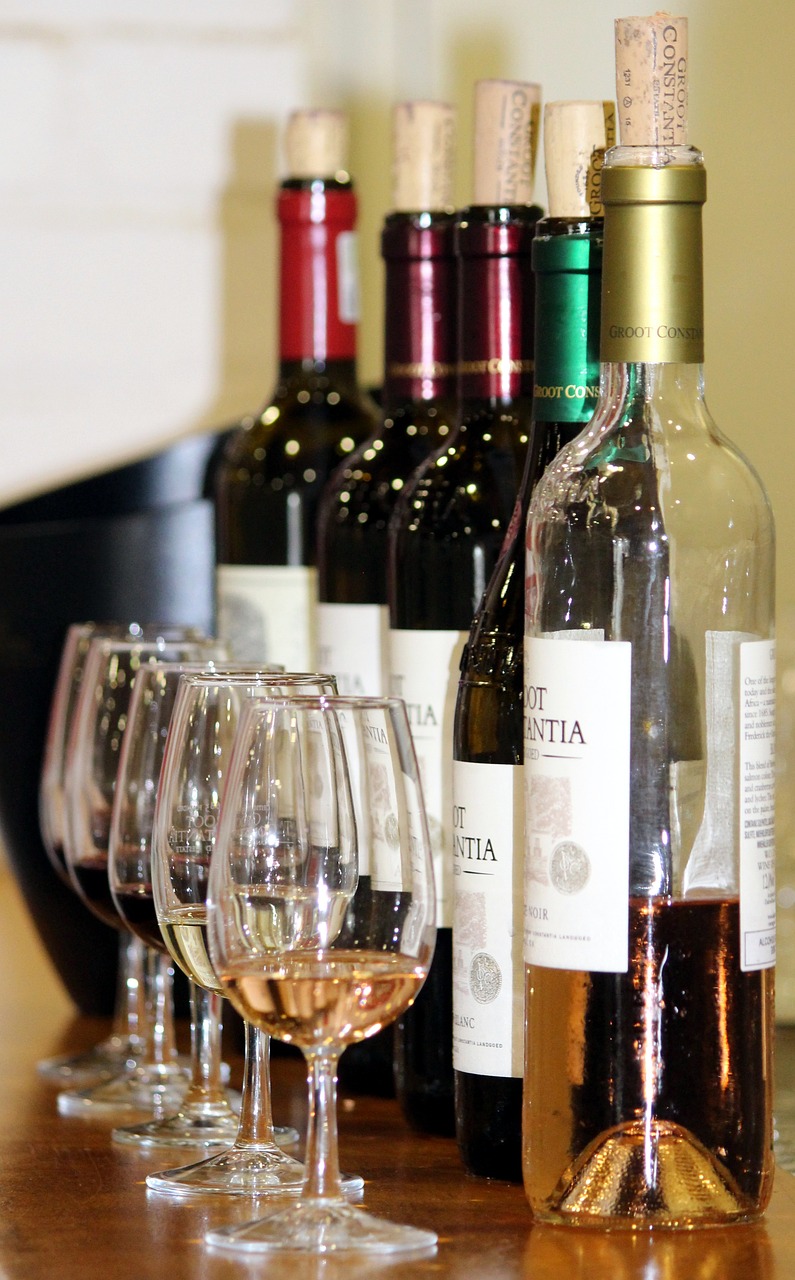Exploring Chardonnay Diversity
Chardonnay is much more than just a single type of wine—it's a grape with incredible range and versatility. From crisp and refreshing to rich and buttery, Chardonnay wines come in a variety of styles to suit every palate and occasion. Let's embark on a journey to discover the many expressions of Chardonnay and celebrate the beauty of this beloved grape.
A Global Phenomenon
Chardonnay is one of the most widely planted grape varieties in the world, thriving in a diverse array of climates and terroirs. This versatility allows winemakers to craft Chardonnay wines that showcase the unique characteristics of their vineyards. From the cool, limestone-rich soils of Chablis in France to the sun-soaked vineyards of California's Central Coast, Chardonnay adapts beautifully, offering distinct regional flavours.
Cool-Climate Chardonnay: Elegance and Precision
In cool-climate regions like Chablis and Burgundy, Chardonnay produces wines with remarkable elegance and precision. These wines are often characterised by their bright acidity, flinty minerality, and citrusy flavours. Chablis, in particular, is renowned for its lean, mineral-driven Chardonnays that pair wonderfully with seafood and shellfish. The cool climate preserves the grape's natural acidity, resulting in wines that are crisp, refreshing, and incredibly food-friendly.
- Flavour Profile: Green apple, lemon, and flint
- Food Pairing: Oysters, grilled fish, and light salads
Warm-Climate Chardonnay: Richness and Complexity
In warmer regions like California's Central Coast and Australia, Chardonnay takes on a richer, more opulent character. The warmer climate allows the grapes to develop fuller, more tropical fruit flavours. These Chardonnays often undergo malolactic fermentation and are aged in oak barrels, which impart creamy textures and notes of vanilla, butter, and toast. These wines are perfect for those who enjoy a fuller-bodied, more complex style of Chardonnay.
- Flavour Profile: Pineapple, mango, vanilla, and butter
- Food Pairing: Roasted chicken, creamy pasta dishes, and grilled vegetables
The Art of Winemaking: Influencing Style and Flavour
Winemaking techniques play a crucial role in determining the style and flavour of Chardonnay. Here are a few key techniques that winemakers use to shape this versatile grape:
- Malolactic Fermentation: This process converts the tart malic acid in the wine to softer lactic acid, resulting in a creamier texture and buttery flavours.
- Oak Aging: Aging Chardonnay in oak barrels adds layers of complexity, including notes of vanilla, toast, and spice. The type of oak (French vs. American) and the duration of aging can significantly influence the wine's final profile.
- Lees Stirring (Bâtonnage): Stirring the lees (dead yeast cells) during aging adds richness and enhances the mouthfeel of the wine, contributing to its overall complexity.
Discovering Your Perfect Chardonnay
One of the joys of Chardonnay is its ability to cater to a wide range of tastes and preferences. Whether you prefer the steely, mineral-driven wines of Chablis or the lush, tropical fruit flavours of California, there is a Chardonnay out there for you. Here are a few tips to help you discover your perfect Chardonnay:
- Experiment with Regions: Try Chardonnays from different regions to understand how climate and terroir influence the wine's characteristics.
- Consider Winemaking Styles: Pay attention to labels and descriptions that mention oak aging, malolactic fermentation, and lees stirring to find the style you enjoy.
- Pair with Food: Experiment with food pairings to see how Chardonnay's versatility can enhance your dining experience.
Celebrating Chardonnay's Diversity
Chardonnay's remarkable diversity is a testament to its adaptability and the creativity of winemakers around the world. From the steely elegance of Chablis to the rich opulence of California, Chardonnay offers a spectrum of flavours and styles that can suit any occasion. Whether you're a seasoned wine enthusiast or a curious newcomer, there's always something new to discover in the world of Chardonnay.
So, raise a glass and join us in celebrating the incredible range and versatility of Chardonnay. Cheers to this beloved grape and the endless possibilities it brings to our tables!
Conclusion
Chardonnay is a grape that never ceases to amaze with its versatility and ability to express the unique characteristics of its growing environment. From the refined, mineral-driven wines of cool climates to the rich, buttery expressions from warmer regions, Chardonnay offers something for everyone. Embrace the diversity of this remarkable grape and explore the many styles it has to offer.
Celebrating Chardonnay's Food-Friendly Nature
Get ready to tantalise your taste buds with Chardonnay! One of the things that makes Chardonnay so special is its incredible versatility as a food pairing wine. From delicate seafood dishes to hearty pasta and poultry, Chardonnay has the flexibility to complement a wide range of cuisines and ingredients. Join us as we explore the delicious world of Chardonnay food pairings and discover how to elevate your dining experience with this beloved grape. Chardonnay's crisp acidity and vibrant fruit flavours make it an excellent partner for a variety of seafood dishes.
Whether you're enjoying a simple grilled fish or indulging in a decadent seafood risotto, Chardonnay's citrusy notes and refreshing acidity will enhance the flavours of the dish without overpowering them. For those who prefer white meat, Chardonnay is also a fantastic pairing for chicken and turkey dishes. Whether roasted, grilled, or served in a creamy sauce, Chardonnay's medium body and balanced acidity make it an ideal companion for poultry. If you're in the mood for pasta, Chardonnay can also be a wonderful match for creamy pasta dishes like fettuccine Alfredo or spaghetti carbonara. The wine's creamy texture and subtle oak notes complement the richness of the sauce, while its acidity helps to cut through the richness and cleanse the palate.
Of course, Chardonnay is also a delightful wine to enjoy on its own as an aperitif or as part of a leisurely meal with friends and family. Whether you're hosting a casual brunch or a formal dinner party, Chardonnay is sure to impress your guests and elevate the dining experience. So why not pour yourself a glass of Chardonnay and explore the wonderful world of food and wine pairing?
Challenging Common Misconceptions
Let's set the record straight on Chardonnay! Despite its widespread popularity, Chardonnay has been the subject of many misconceptions over the years. From the belief that all Chardonnays are overly oaky to the notion that they lack complexity, these stereotypes simply don't hold up to scrutiny. In reality, Chardonnay is a grape with incredible versatility and diversity, capable of producing a wide range of styles to suit every taste and preference. Join us as we challenge these common misconceptions and showcase the true beauty of Chardonnay wines.
One of the most common misconceptions about Chardonnay is that all examples are heavily oaked and buttery. While it's true that some Chardonnays are aged in oak barrels and undergo malolactic fermentation, not all Chardonnays fit this profile. In fact, many winemakers are now producing Chardonnays in a more restrained style, allowing the fruit to shine without overwhelming oak influence. These unoaked or lightly oaked Chardonnays offer vibrant fruit flavours and crisp acidity, perfect for those who prefer a fresher, more fruit-forward style of wine. Another misconception about Chardonnay is that it lacks complexity compared to other white grape varieties.
While it's true that Chardonnay can produce easy-drinking, straightforward wines, it is also capable of producing wines of great depth and complexity. Chardonnays from premier cru and grand cru vineyards in regions like Burgundy can age beautifully, developing nuanced flavours and aromas over time. Even Chardonnays from less prestigious regions can offer complexity and interest, with layers of flavour that unfold with each sip. Join us as we explore the world of Chardonnay and challenge these common misconceptions.
Showcasing Regional Expressions
Let's take a tour of the world through Chardonnay! Each wine region has its own unique terroir and winemaking traditions, which impart distinctive flavours and characteristics to the Chardonnay wines produced there. From the crisp, mineral-driven wines of Chablis to the rich, tropical fruit flavours of California's Central Coast, there's a Chardonnay for every palate and preference. Join us as we explore the diverse regional expressions of Chardonnay and discover the beauty of terroir. Chablis is renowned for its crisp, mineral-driven Chardonnays, which are grown in Kimmeridgian limestone soils.
These wines are characterised by their bright acidity, flinty minerality, and citrusy flavours, making them an ideal pairing for seafood and shellfish dishes. Burgundy is another famous Chardonnay-producing region, known for its elegant and complex wines. Chardonnays from premier cru and grand cru vineyards in Burgundy's Côte de Beaune subregion can offer a wide range of flavours and aromas, from crisp green apple and lemon to ripe peach and honey. Moving across the globe to California's Central Coast, we find Chardonnays with rich, tropical fruit flavours and creamy textures.
These wines are often aged in oak barrels, which impart notes of vanilla, toast, and caramel, adding depth and complexity to the wine. Whether you prefer the crisp, mineral-driven styles of Chablis or the rich, tropical fruit flavours of California, there's a Chardonnay out there to suit your taste. Join us as we explore the diverse regional expressions of this beloved grape and discover the unique terroirs that shape each wine.
Highlighting Sustainable and Organic Chardonnay
Sustainability meets sophistication in Chardonnay! As consumers become increasingly conscious of their environmental impact, many wineries are embracing sustainable and organic practices in their vineyards and cellars. From dry-farming and biodiversity initiatives to organic and biodynamic certification, there are many ways that producers are prioritising sustainability in Chardonnay production. Join us as we shine a spotlight on these eco-friendly practices and discover how sustainable Chardonnay wines are making a positive impact on the planet. Sustainable winegrowing practices aim to minimise environmental impact while maximising vineyard health and grape quality.
This can include using organic fertilisers and pesticides, implementing water conservation measures, and promoting biodiversity in the vineyard. By adopting sustainable practices, wineries can reduce their carbon footprint and preserve natural resources for future generations. Organic and biodynamic certification takes sustainability a step further by prohibiting the use of synthetic chemicals and promoting holistic farming practices. Organic vineyards are certified by accredited agencies and must adhere to strict guidelines for pesticide use, soil management, and biodiversity conservation. Biodynamic farming takes a more holistic approach to agriculture, viewing the vineyard as a self-sustaining ecosystem.
Biodynamic vineyards follow a lunar calendar and use natural preparations to enhance soil fertility and plant health. By supporting wineries that prioritise sustainability and environmental stewardship, consumers can make a positive impact on the planet while enjoying delicious Chardonnay wines. So why not raise a glass to sustainability and savour the complex flavours of a sustainably produced Chardonnay? Join us as we explore the world of sustainable and organic Chardonnay and discover the beauty of wines that are as good for the planet as they are for the palate.
A round-the-world tour of wine regions
Wine is a celebration of culture, history, and terroir, with each region offering a unique expression of the land and climate from which it originates. From the rolling hills of France to the sun-drenched vineyards of Australia, the world is brimming with exceptional wine regions, each with its own distinctive characteristics and renowned wines. Let's embark on a journey through some of the most famous wine regions, exploring their unique qualities and highlighting a must-try red, white, and rosé from each.
France: The Epitome of Elegance
France is often considered the birthplace of fine wine, with a rich history and diverse range of wine-producing regions. Here are a few of the most notable:
Bordeaux
- Characteristics: Bordeaux, located in southwestern France, is famed for its prestigious red wines. The region's wines are typically blends, featuring varieties like Cabernet Sauvignon, Merlot, and Cabernet Franc. Bordeaux wines are known for their complexity, ageing potential, and balance.
- Must-Try Wines:
- Red: Château Margaux - A classic Bordeaux blend with rich, complex flavours and exceptional ageing potential.
- White: Château Haut-Brion Blanc - An elegant white Bordeaux with citrus, floral, and mineral notes.
- Rosé: Château de Sours Rosé - A fresh and vibrant rosé with red berry and floral aromas.
Burgundy
- Characteristics: Burgundy, or Bourgogne, is celebrated for its Pinot Noir and Chardonnay. The region's wines are highly expressive of their terroir, with a focus on single varietals and small-scale production.
- Must-Try Wines:
- Red: Domaine de la Romanée-Conti - A legendary Pinot Noir known for its finesse and complexity.
- White: Domaine Leflaive Puligny-Montrachet - A prestigious Chardonnay with notes of citrus, white flowers, and minerality.
- Rosé: Bourgogne Rosé - A delicate and refreshing rosé with red fruit and floral characteristics.
Champagne
- Characteristics: The Champagne region, located in northeastern France, is synonymous with sparkling wine. Champagne is produced using the traditional method, with secondary fermentation occurring in the bottle. The wines are known for their elegance, fine bubbles, and complexity.
- Must-Try Wines:
- Red: While Champagne is predominantly known for its sparkling wines, red wines from the region, like Coteaux Champenois Rouge, are worth exploring.
- White: Dom Pérignon - An iconic Champagne with rich, toasty flavours and a creamy texture.
- Rosé: Laurent-Perrier Cuvée Rosé - A beautifully crafted rosé Champagne with notes of red berries and brioche.
Italy: The Land of Diversity
Italy's wine regions are incredibly diverse, reflecting the country's varied climates and terrains. Each region offers something unique, from robust reds to crisp whites.
Tuscany
- Characteristics: Tuscany is renowned for its Sangiovese-based wines, particularly Chianti and Brunello di Montalcino. The region's wines are known for their elegance, structure, and ageing potential.
- Must-Try Wines:
- Red: Brunello di Montalcino - A powerful and complex red with notes of cherry, leather, and spice.
- White: Vernaccia di San Gimignano - A crisp and aromatic white with citrus and floral notes.
- Rosé: Rosato di Toscana - A refreshing and fruity rosé with red berry and herbal aromas.
Piedmont
- Characteristics: Piedmont, in northwestern Italy, is famous for its Nebbiolo-based wines, such as Barolo and Barbaresco. The region's wines are celebrated for their complexity, tannic structure, and ageing potential.
- Must-Try Wines:
- Red: Barolo - Known as the "King of Wines," Barolo is rich, powerful, and complex with notes of tar and roses.
- White: Gavi - A light and crisp white wine with citrus, green apple, and almond notes.
- Rosé: Chiaretto di Bardolino - A fresh and fruity rosé with flavours of strawberry and cherry.
Veneto
- Characteristics: Veneto, in northeastern Italy, is home to a variety of wine styles, including the famous Prosecco and rich reds like Amarone della Valpolicella.
- Must-Try Wines:
- Red: Amarone della Valpolicella - A robust and intense red with dried fruit, chocolate, and spice notes.
- White: Soave - A refreshing and aromatic white with notes of peach, almond, and floral.
- Rosé: Prosecco Rosé - A lively and aromatic sparkling rosé with notes of red berries and floral.
Spain: The Essence of Tradition
Spain's wine regions are steeped in tradition, producing a wide range of wines from vibrant reds to crisp whites.
Rioja
- Characteristics: Rioja, located in northern Spain, is renowned for its Tempranillo-based red wines. The region's wines are known for their balance, elegance, and ageing potential, often aged in American oak barrels.
- Must-Try Wines:
- Red: Rioja Gran Reserva - A complex and structured red with notes of dark fruit, vanilla, and spice.
- White: Rioja Blanco - A fresh and zesty white with citrus and green apple flavours.
- Rosé: Rioja Rosado - A vibrant and fruity rosé with red berry and floral aromas.
Ribera del Duero
- Characteristics: Ribera del Duero, also in northern Spain, is celebrated for its robust and powerful red wines made predominantly from Tempranillo. The region's wines are known for their intensity, depth, and ageing potential.
- Must-Try Wines:
- Red: Ribera del Duero Crianza - A rich and intense red with notes of dark fruit, tobacco, and spice.
- White: Verdejo - A crisp and aromatic white with citrus, tropical fruit, and herbal notes.
- Rosé: Ribera del Duero Rosado - A fresh and fruity rosé with flavours of strawberry and cherry.
Rías Baixas
- Characteristics: Rías Baixas, located in northwestern Spain, is renowned for its Albariño wines. The region's wines are celebrated for their crisp acidity, aromatic profile, and minerality.
- Must-Try Wines:
- Red: While red wines are less common in Rías Baixas, look for a regional red made from Mencía.
- White: Albariño - A fresh and aromatic white with notes of citrus, peach, and minerality.
- Rosé: Rías Baixas Rosé - A crisp and refreshing rosé with red fruit and floral characteristics.
United States: Innovation and Diversity
The United States, particularly California, has become a powerhouse in the wine world, known for its innovation and diverse wine styles.
Napa Valley
- Characteristics: Napa Valley, located in California, is famous for its Cabernet Sauvignon and Chardonnay. The region's wines are known for their rich flavours, complexity, and ageing potential.
- Must-Try Wines:
- Red: Napa Valley Cabernet Sauvignon - A bold and complex red with dark fruit, chocolate, and spice notes.
- White: Napa Valley Chardonnay - A rich and creamy white with notes of tropical fruit, vanilla, and butter.
- Rosé: Napa Valley Rosé - A vibrant and fruity rosé with red berry and floral aromas.
Sonoma County
- Characteristics: Sonoma County, also in California, offers a diverse range of wines, from Pinot Noir and Zinfandel to Chardonnay and Sauvignon Blanc. The region's wines are known for their balance, elegance, and expression of terroir.
- Must-Try Wines:
- Red: Russian River Valley Pinot Noir - An elegant and complex red with notes of cherry, raspberry, and earth.
- White: Sonoma Coast Sauvignon Blanc - A crisp and aromatic white with citrus, tropical fruit, and herbal notes.
- Rosé: Sonoma County Rosé - A fresh and vibrant rosé with red berry and floral characteristics.
Willamette Valley
- Characteristics: Willamette Valley, located in Oregon, is renowned for its Pinot Noir. The region's wines are celebrated for their elegance, complexity, and expression of terroir.
- Must-Try Wines:
- Red: Willamette Valley Pinot Noir - An elegant and complex red with notes of cherry, raspberry, and earth.
- White: Willamette Valley Chardonnay - A crisp and balanced white with notes of citrus, apple, and mineral.
- Rosé: Willamette Valley Rosé - A vibrant and fruity rosé with red berry and floral aromas.
Australia: Bold and Expressive
Australia is known for its bold and expressive wines, with regions like Barossa Valley and Margaret River gaining international acclaim.
Barossa Valley
- Characteristics: Barossa Valley, located in South Australia, is famed for its Shiraz. The region's wines are known for their rich, ripe fruit flavours and full-bodied character.
- Must-Try Wines:
- Red: Barossa Valley Shiraz - A bold and complex red with notes of blackberry, plum, and spice.
- White: Eden Valley Riesling - A crisp and aromatic white with citrus, green apple, and floral notes.
- Rosé: Barossa Valley Rosé - A fresh and vibrant rosé with red berry and floral characteristics.
Margaret River
- Characteristics: Margaret River, in Western Australia, is celebrated for its Cabernet Sauvignon and Chardonnay. The region's wines are known for their balance, elegance, and complexity.
- Must-Try Wines:
- Red: Margaret River Cabernet Sauvignon - A complex and structured red with notes of blackcurrant, mint, and cedar.
- White: Margaret River Chardonnay - A rich and balanced white with notes of citrus, stone fruit, and mineral.
- Rosé: Margaret River Rosé - A fresh and vibrant rosé with red berry and floral aromas.
Yarra Valley
- Characteristics: Yarra Valley, located in Victoria, is known for its cool-climate wines, particularly Pinot Noir and Chardonnay. The region's wines are celebrated for their elegance, finesse, and expression of terroir.
- Must-Try Wines:
- Red: Yarra Valley Pinot Noir - An elegant and complex red with notes of cherry, raspberry, and earth.
- White: Yarra Valley Chardonnay - A crisp and balanced white with notes of citrus, apple, and mineral.
- Rosé: Yarra Valley Rosé - A vibrant and fruity rosé with red berry and floral characteristics.
New Zealand: A Land of Purity
New Zealand has gained a reputation for its pristine, aromatic wines, particularly Sauvignon Blanc and Pinot Noir.
Marlborough
- Characteristics: Marlborough, located on the South Island, is famed for its Sauvignon Blanc. The region's wines are known for their vibrant acidity, aromatic intensity, and pure fruit flavours.
- Must-Try Wines:
- Red: Marlborough Pinot Noir - An elegant and complex red with notes of cherry, raspberry, and spice.
- White: Marlborough Sauvignon Blanc - A crisp and aromatic white with notes of citrus, tropical fruit, and herbaceousness.
- Rosé: Marlborough Rosé - A fresh and vibrant rosé with red berry and floral aromas.
Central Otago
- Characteristics: Central Otago, also on the South Island, is celebrated for its Pinot Noir. The region's wines are known for their purity, intensity, and expression of terroir.
- Must-Try Wines:
- Red: Central Otago Pinot Noir - A rich and complex red with notes of cherry, plum, and spice.
- White: Central Otago Riesling - A crisp and aromatic white with notes of citrus, green apple, and floral.
- Rosé: Central Otago Rosé - A vibrant and fruity rosé with red berry and floral characteristics.
Argentina: The Heart of Malbec
Argentina has become synonymous with Malbec, particularly from the high-altitude vineyards of Mendoza.
Mendoza
- Characteristics: Mendoza, located at the foothills of the Andes, is renowned for its Malbec. The region's wines are known for their rich, dark fruit flavours, smooth tannins, and depth.
- Must-Try Wines:
- Red: Mendoza Malbec - A bold and complex red with notes of blackberry, plum, and chocolate.
- White: Mendoza Torrontés - A crisp and aromatic white with notes of citrus, tropical fruit, and floral.
- Rosé: Mendoza Rosé - A fresh and vibrant rosé with red berry and floral characteristics.
South Africa: A Blend of Old and New
South Africa's wine regions, particularly Stellenbosch, offer a blend of old-world tradition and new-world innovation.
Stellenbosch
- Characteristics: Stellenbosch, located in the Western Cape, is known for its Cabernet Sauvignon and Chenin Blanc. The region's wines are celebrated for their balance, complexity, and expression of terroir.
- Must-Try Wines:
- Red: Stellenbosch Cabernet Sauvignon - A rich and complex red with notes of blackcurrant, plum, and spice.
- White: Stellenbosch Chenin Blanc - A crisp and aromatic white with notes of citrus, apple, and honey.
- Rosé: Stellenbosch Rosé - A fresh and vibrant rosé with red berry and floral characteristics.
Exploring the world's wine regions is a journey through diverse landscapes, climates, and cultures. Each region offers a unique expression of its terroir, producing wines that reflect the land and traditions of their origins. Whether you're sipping a bold Barossa Valley Shiraz or a crisp Marlborough Sauvignon Blanc, the world of wine invites you to discover new flavours and experiences.
Pairing Chocolate and Wine: A Match Made in Heaven
Pairing chocolate with wine is an art and a science, requiring a delicate balance of flavours and textures. When done right, the combination can create a symphony of taste that delights the senses. Whether you're a seasoned wine connoisseur or a chocolate lover looking to explore new horizons, this guide will help you navigate the delicious world of chocolate and wine pairing.
Understanding the Basics
Before diving into specific pairings, it's important to understand the basics of flavour profiles and how they interact. Chocolate, much like wine, comes in various forms and flavours, ranging from the rich bitterness of dark chocolate to the creamy sweetness of milk chocolate. Wine, with its diverse range of tastes and aromas, offers a perfect companion to chocolate's complexity.
The key to a successful pairing is balance. The intensity of the wine should match the intensity of the chocolate. Here are a few principles to keep in mind:
- Sweetness: The wine should be at least as sweet as the chocolate to avoid unpleasant bitterness.
- Intensity: Pair light wines with lighter chocolates and bold wines with richer, more intense chocolates.
- Tannins: Tannic wines work well with darker chocolates, as the bitterness in both can complement each other.
Perfect Pairings
Dark Chocolate and Cabernet Sauvignon
-
- Why it works: Dark chocolate, with its high cocoa content and slight bitterness, pairs beautifully with the bold, tannic structure of Cabernet Sauvignon. The wine's dark fruit flavours, such as blackberry and plum, enhance the richness of the chocolate, creating a harmonious blend of tastes.
- Tip: Look for a Cabernet with softer tannins to avoid overpowering the chocolate.
Milk Chocolate and Merlot
-
- Why it works: Milk chocolate's creamy sweetness pairs wonderfully with the smooth, fruit-forward profile of Merlot. The wine's soft tannins and notes of cherry and plum complement the chocolate's mild cocoa flavour.
- Tip: Choose a Merlot with a hint of oak for an added layer of complexity.
White Chocolate and Moscato d'Asti
-
- Why it works: White chocolate, with its buttery and vanilla notes, pairs excellently with the sweet, slightly effervescent Moscato d'Asti. The wine's light, fruity flavours and refreshing acidity balance the richness of the white chocolate.
- Tip: Serve the Moscato chilled to enhance its crispness and contrast with the creamy texture of the chocolate.
Chocolate with Nuts and Tawny Port
-
- Why it works: The nutty, caramel flavours of Tawny Port are a natural match for chocolate containing nuts. Whether it's hazelnuts, almonds, or pecans, the port's rich, sweet profile enhances the nutty elements in the chocolate.
- Tip: Opt for a well-aged Tawny Port to fully appreciate the depth of flavours.
Dark Chocolate with Sea Salt and Zinfandel
-
- Why it works: The salt in the chocolate amplifies the wine's fruitiness and spice, while the dark chocolate adds a layer of complexity. Zinfandel, with its bold, jammy flavours and peppery finish, complements the savoury-sweet combination.
- Tip: Look for a Zinfandel with a balanced acidity to keep the pairing from becoming too heavy.
Tips for a Successful Pairing
- Experiment: Everyone's palate is different, so don't be afraid to try new combinations and find what works best for you.
- Consider the Occasion: Pairings can vary based on the context—whether it's a casual gathering, a romantic dinner, or a festive celebration.
- Presentation: Serve chocolate at room temperature to best appreciate its flavours and textures. For wine, follow standard serving temperature guidelines to enhance its characteristics.
Pairing chocolate and wine is a delightful journey that combines two of life's greatest pleasures. By understanding the basics and experimenting with different combinations, you can create memorable experiences for yourself and your guests. So, the next time you're enjoying a glass of wine, consider reaching for a piece of chocolate and discover the magic that happens when these two worlds collide.
Classic Red Sangria
Ingredients:
- 1 bottle of red wine (Spanish wine like Tempranillo or Garnacha works well)
- 1/4 cup brandy
- 1/4 cup orange liqueur (like Triple Sec or Cointreau)
- 1/4 cup orange juice
- 1/4 cup simple syrup (adjust to taste)
- 1 orange, thinly sliced
- 1 lemon, thinly sliced
- 1 lime, thinly sliced
- 1 apple, cored and chopped
- 1/2 cup fresh berries (like strawberries, blueberries, or raspberries)
- 1-2 cups soda water or lemon-lime soda
- Ice cubes
Instructions:
- Prepare the Fruit: In a large pitcher, combine the orange, lemon, lime slices, chopped apple, and berries.
- Mix the Liquids: Pour in the wine, brandy, orange liqueur, and orange juice. Add the simple syrup to sweeten, adjusting to your taste.
- Chill: Stir the mixture well and refrigerate for at least 2 hours, preferably overnight, to allow the flavours to meld.
- Serve: Just before serving, add the soda water or lemon-lime soda to the pitcher. Stir gently to combine.
- Garnish and Enjoy: Fill glasses with ice cubes, pour the sangria over the ice, ensuring some fruit pieces are included in each glass. Garnish with extra fruit slices if desired.
For a different twist, consider using white wine or rosé for a lighter version, and experiment with seasonal fruits like peaches or pomegranates for a unique flavour profile.
Picking your Glass
Choosing the right wine glass can significantly enhance your wine tasting experience. Famous wine glass manufacturers like Riedel and Zalto have designed specific glassware to bring out the best in different types of wine. Here’s a guide to help you understand the various types of wine glasses and their uses.
1. Red Wine Glasses
- Bordeaux Glass: Designed for full-bodied red wines such as Cabernet Sauvignon, Merlot, and Bordeaux blends. These glasses have a tall bowl and a large surface area to help aerate the wine, allowing the rich aromas to develop.
- Example: Riedel Vinum Bordeaux, Zalto Denk'Art Bordeaux.
- Burgundy Glass: Perfect for lighter, more delicate red wines like Pinot Noir. These glasses have a wider bowl to emphasize the subtler aromas and enhance the wine's elegance.
- Example: Riedel Vinum Burgundy, Zalto Denk'Art Burgundy.
2. White Wine Glasses
- Chardonnay Glass: Ideal for fuller-bodied white wines. The larger bowl allows the complex aromas of Chardonnay and other similar wines to develop fully.
- Example: Riedel Vinum Chardonnay, Zalto Universal Glass.
- Sauvignon Blanc Glass: Best for lighter, crisp white wines like Sauvignon Blanc, Riesling, and Pinot Grigio. The narrower bowl helps maintain the wine's freshness and directs it to the tip of the tongue, where sweetness is most perceived.
- Example: Riedel Vinum Sauvignon Blanc, Zalto White Wine Glass.
3. Sparkling Wine Glasses
- Champagne Flute: Designed for sparkling wines and Champagne, the flute's tall, narrow shape preserves the bubbles and concentrates the aromas.
- Example: Riedel Vinum Champagne, Zalto Champagne Glass.
- Tulip Glass: Similar to a flute but with a slight curve outward near the top. This shape allows more room for the aromas to develop while still preserving the bubbles.
- Example: Riedel Veritas Champagne, Zalto Universal Glass.
4. Dessert Wine Glasses
- Port Glass: Smaller in size to enhance the rich, sweet aromas and flavors of dessert wines like Port and Sherry. The smaller bowl also helps control the strong alcohol content.
- Example: Riedel Vinum Port, Zalto Sweet Wine Glass.
5. Universal Wine Glasses
- Universal Glass: Versatile and suitable for a wide range of wines. While not tailored to any specific type, these glasses are perfect for everyday use and casual wine tasting.
- Example: Zalto Denk'Art Universal Glass, Riedel Ouverture Magnum.
Why the Right Glass Matters
The shape of a wine glass affects the way you perceive the wine’s aromas and flavors. By directing the wine to specific areas of your tongue, a well-designed glass can enhance the tasting experience, bringing out the best in each wine.
Both Riedel and Zalto have dedicated years to the science of wine glass design, ensuring that each glass shape optimizes the characteristics of different wines. Investing in the right glassware can transform your wine tasting journey from ordinary to extraordinary.
For more information, you can visit the official websites of Riedel and Zalto.
By understanding the role of different wine glasses, you can elevate your wine tasting experience and truly appreciate the nuances of each wine you enjoy. Cheers to exploring the world of wine glassware!
The Art of Winetasting
Wine tasting is more than just sipping and swallowing; it's an art that engages all your senses and can enhance your appreciation of different wines. Whether you're a complete novice or just looking to refine your skills, here are some essential tips and tricks to help you get started on your wine-tasting journey.
1. Choose the Right Glassware
- Shape Matters: Use a glass with a bowl that narrows at the top to concentrate the aromas. This is especially important for red wines.
- Stemmed Glasses: Additionally, hold the glass by the stem to avoid warming the wine with your hands.
2. Observe the Wine
- Colour and Clarity: Firstly, tilt the glass at a 45-degree angle and observe the wine against a white background. Note the colour, clarity, and viscosity. This can give clues about the wine’s age, grape variety, and concentration.
3. Swirl the Wine
- Aeration: Furthermore, gently swirl the wine in your glass to expose it to air. This releases the wine's aromas, making it easier to detect different scents.
4. Smell the Wine
- First Impression: Initially, take a quick sniff to get your first impression of the wine's aroma.
- Deep Inhale: Then, take a deeper sniff to identify specific aromas. Think about fruits, flowers, herbs, spices, and other scents. This step is crucial, as much of what we perceive as taste is actually smell.
5. Taste the Wine
- Small Sips: To begin with, take a small sip and let it sit in your mouth. Roll it around to cover all your taste buds.
- Identify Flavours: Next, pay attention to the different flavours you experience. Consider sweetness, acidity, tannin levels, and alcohol content.
- Texture: Additionally, note the wine's body and texture. Is it light and crisp or full-bodied and rich?
6. Savour the Finish
- Length of Finish: Swallow the wine and observe the aftertaste. A long finish is often a sign of a high-quality wine.
- Final Notes: Identify any lingering flavours or sensations.
7. Keep a Wine Journal
- Record Your Impressions: Subsequently, jot down your thoughts on each wine you taste. Include details about the wine’s appearance, aroma, taste, and finish. Over time, this will help you recognise patterns in your preferences.
8. Understand Wine Terminology
- Common Terms: Familiarise yourself with basic wine terms like body, tannin, acidity, and bouquet. This will help you articulate your tasting experiences more effectively.
9. Pairing Wine with Food
- Complement and Contrast: Learn the basics of wine and food pairing. Generally, white wines pair well with lighter dishes like fish and chicken, while red wines are better with richer dishes like beef and lamb.
- Experiment: Moreover, don’t be afraid to try unconventional pairings. Sometimes, the best matches are the least expected.
10. Practice, Practice, Practice
- Attend Tastings: Join local wine tasting events or visit wineries. The more you taste, the better you'll become at identifying different characteristics.
- Wine Tasting Groups: Furthermore, join a wine tasting group to share experiences and learn from others.
Cheers!
Wine tasting is a personal and subjective experience. What you enjoy might differ from others, and that’s perfectly okay. The most important thing is to have fun and enjoy the process of discovering new wines.
Whether you're enjoying a glass with friends or exploring a new vineyard, these tips will help you appreciate the nuances of each wine you taste. Cheers to your wine tasting journey!


